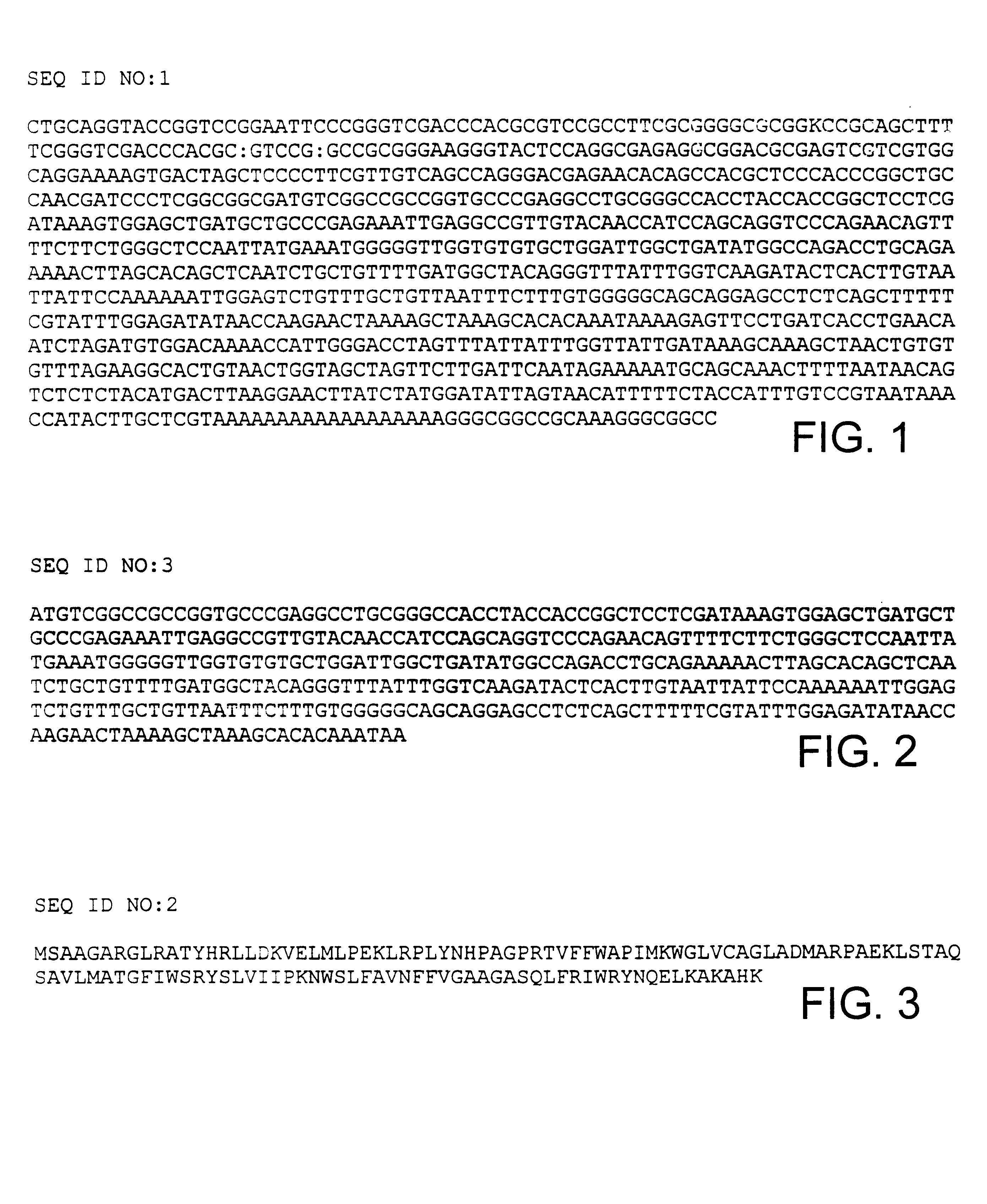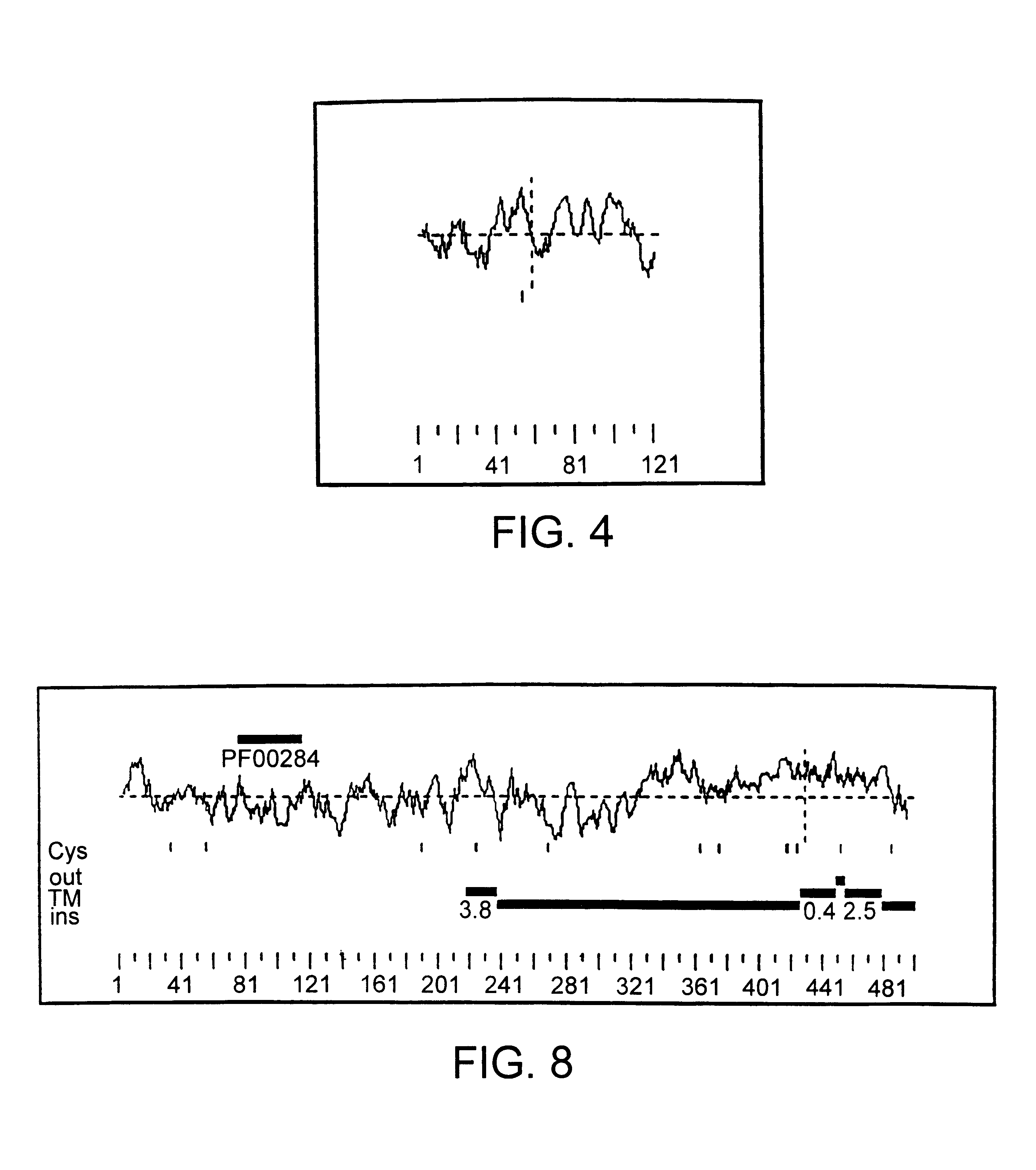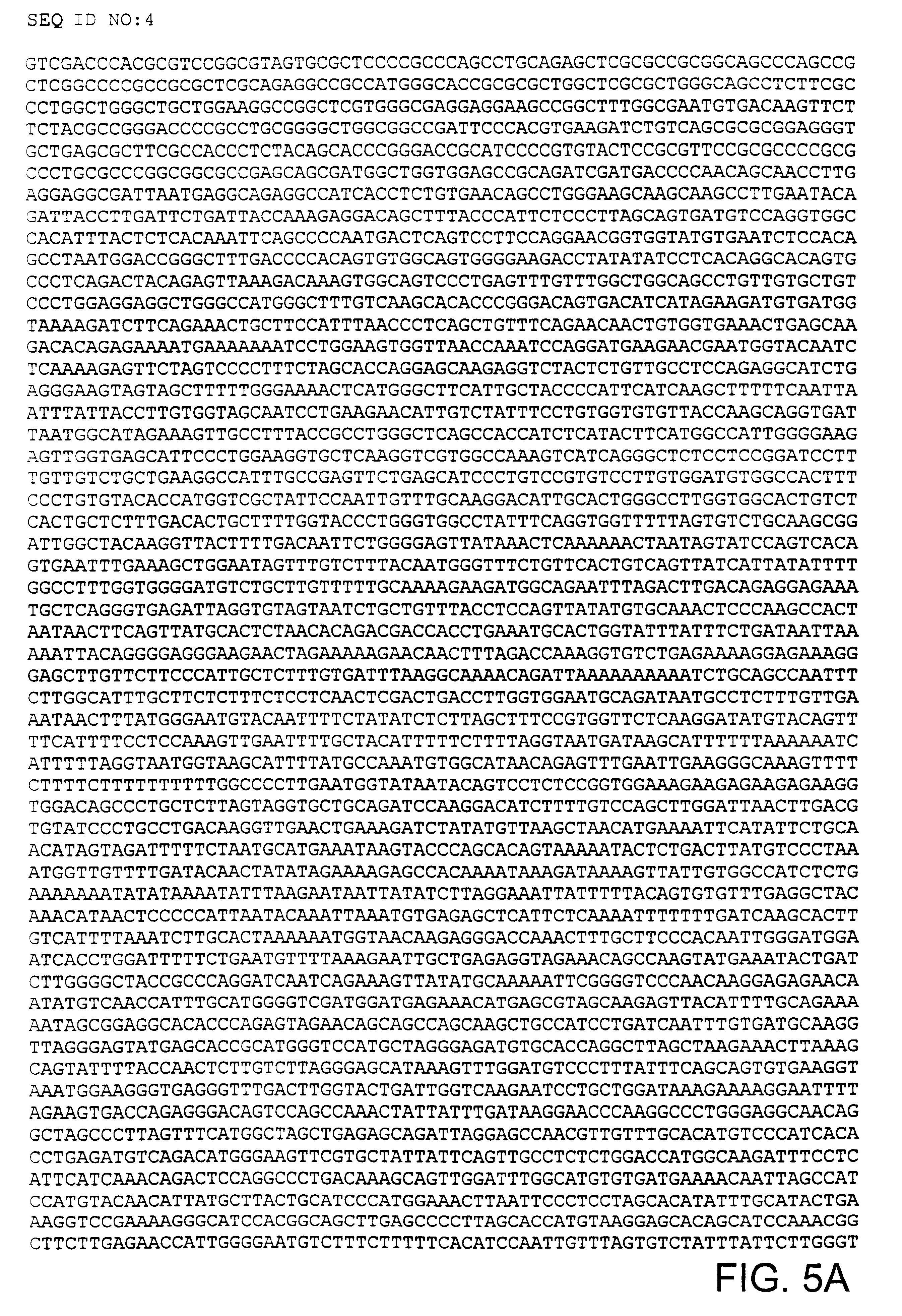HRPCa9 and HRPCa10 nucleic acids and polypeptides
- Summary
- Abstract
- Description
- Claims
- Application Information
AI Technical Summary
Benefits of technology
Problems solved by technology
Method used
Image
Examples
example 1
Identification of Genes that are Constitutively Expressed in Androgen Independent Prostate Cancer Cells
HRPCa 9 and HRPCa 10 were identified using a strategy designed to identify genes whose expression is induced by testosterone (or a similar androgen) in androgen-dependent prostate cancer cells and are constitutively expressed in androgen-independent prostate cancer cells.
WT LNCaP cells (androgen-dependent prostate cancer cells) were routinely grown in T162 flasks coated with Matrigel in RPMI-1640 medium supplemented with 10% FBS and 50 nM testosterone.
To identify androgen regulated genes, LNCaP cells were first incubated in the absence of androgens and then treated with either testosterone or casodex. Ten T162 flasks of LNCaP cells were pre-incubated for 24.5 hours in dye-free RPMI-1640 containing 2% charcoal stripped serum. Following pretreatment, five T162 flasks of pretreated cells were treated with testosterone-containing medium (dye-free RPMI-1640, 2% CSS, 100 nM testosterone,...
example 2
HRPCa 9
The HRPCa 9 cDNA of SEQ ID NO:1 (FIG. 1) has a 378 nucleotide open reading frame (SEQ ID NO:3; FIG. 2) encoding a 126 amino acid protein (SEQ ID NO:2; FIG. 3).
Based on amino acid sequence homology, HRPCa 9 is predicted to be the human homolog of rat 0-44 protein (Tsou et al. (1986) Molecular and Cellular Biology —:768-78)
HRPCa 9 is predicted to have one potential N-glycosylation site (amino acids 93-96 of SEQ ID NO:2); and three potential N-myristolation sites (amino acids 8-13, 51-56, and 104-109 of SEQ ID NO:2).
FIG. 4 is a hydropathy plot of HRPCa 9. Relative hydrophobicity is shown above the dotted line, and relative hydrophilicity is shown below the dotted line.
A clone (EpHRPCa9) containing a cDNA encoding HRPCa9 was deposited with the American Type Culture Collection (ATCC), 10801 University Blvd., Manassass, Va. 20110-2209 on May 17, 2000, and assigned Accession Number PTA-1813.
example 3
HRPCa 10
The HRPCa 10 cDNA of SEQ ID NO:4 (FIGS. 5A-5B) has a 1500 nucleotide open reading frame (SEQ ID NO:6; FIG. 6) encoding a 500 amino acid protein (SEQ ID NO:5; FIG. 7).
HRPCa 10 is predicted to have potential one cAMP-and cGMP-dependent protein kinase phosphorylation site (amino acids 311-314 of SEQ ID NO:5); six potential protein kinase C phosphorylation sites (amino acids 3-5, 70-72, 276-278, 298-300, 307-309, and 310-312 of SEQ ID NO:5); six potential casein kinase II phosphorylation sites (amino acids 70-73, 106-109, 169-172, 180-183, 192-195, and 272-275 of SEQ ID NO:5); nine potential N-myristoylation sites (amino acids 10-15, 17-22, 41-46, 125-130, 201-206, 229-234, 371-376, 458-463, and 472-477 of SEQ ID NO:5); and one potential leucine zipper region (amino acids 413-434 of SEQ ID NO:5).
FIG. 6 is a hydropathy plot of HRPCa 10. Relative hydrophobicity is shown above the dotted line, and relative hydrophilicity is shown below the dotted line.
A clone (EpHRPCa10) containing...
PUM
 Login to View More
Login to View More Abstract
Description
Claims
Application Information
 Login to View More
Login to View More - R&D
- Intellectual Property
- Life Sciences
- Materials
- Tech Scout
- Unparalleled Data Quality
- Higher Quality Content
- 60% Fewer Hallucinations
Browse by: Latest US Patents, China's latest patents, Technical Efficacy Thesaurus, Application Domain, Technology Topic, Popular Technical Reports.
© 2025 PatSnap. All rights reserved.Legal|Privacy policy|Modern Slavery Act Transparency Statement|Sitemap|About US| Contact US: help@patsnap.com



